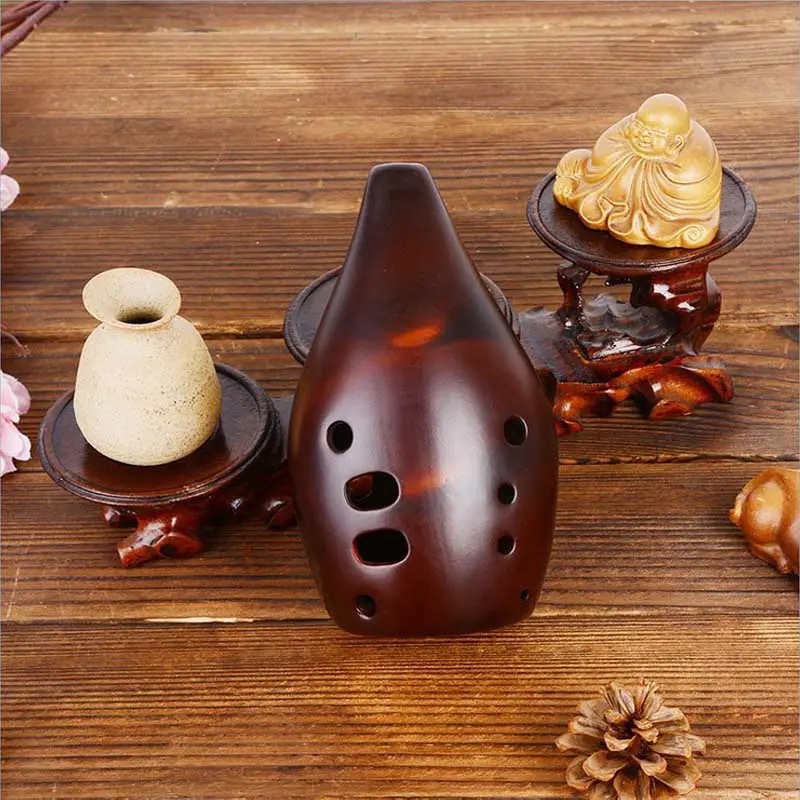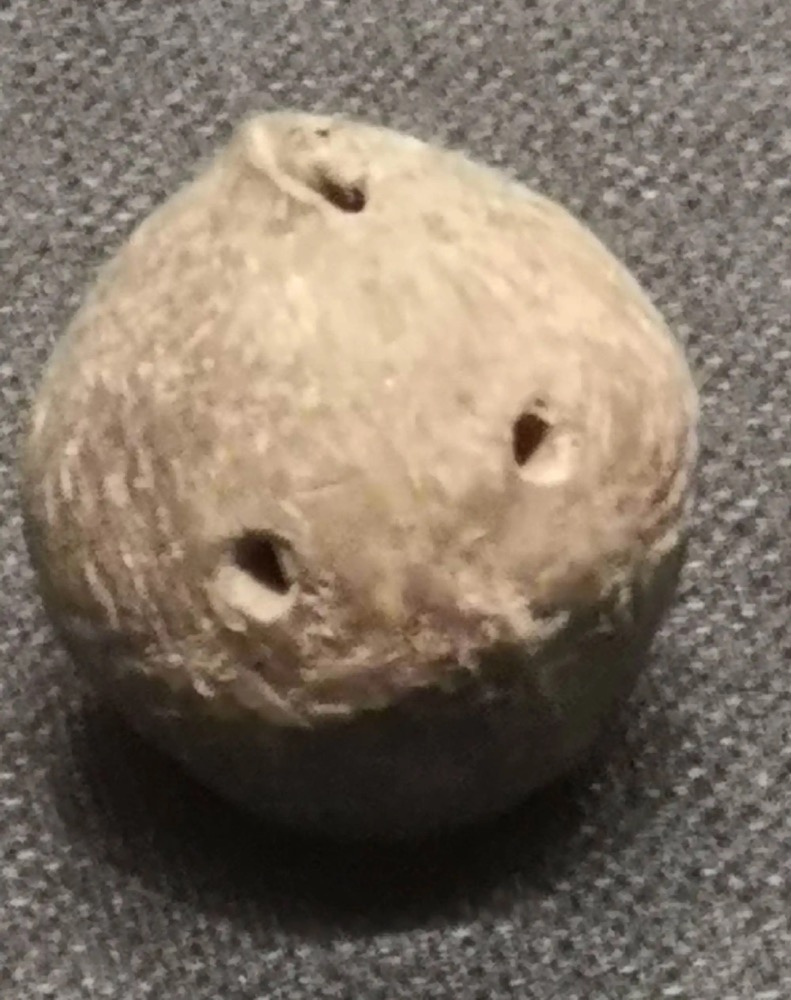Numerous musical instruments exist, each with its own unique tone and historical significance. The xun is a traditional Chinese vessel flute that has been played for thousands of years. Here, we’ll investigate the xun’s background and design, highlighting its distinctive characteristics.
What is the Xun Musical Instrument?

The xun has been played as part of Chinese culture for centuries. It’s a clay flute that looks like a flattened ball or a gourd and is used as a vessel. The xun, like the ocarina, makes a gentle and soothing sound.
Although its history is shrouded in mystery, the xun has likely been in use in China for the past seven thousand years. It has been discovered in archaeological sites that date back to the Neolithic era, making it one of the oldest musical instruments in the world.
Traditionally, the xun has been crafted from clay, which is then shaped and baked in a kiln. The xun’s distinctive texture and color come from the high-quality clay used in its construction, which can be anything from purple clay to red clay. Bamboo or wood can also be used to craft the xun.
The xun is typically played by a single musician, and its mellow sound is perfect for playing soothing melodies. It is commonly used to set a reflective and contemplative tone in traditional Chinese music. The xun is not just played solo, but also in ensembles and orchestras to add a new dimension to the sound and contrast with other instruments.
In order to complete an xun, there are several stages. It all starts with a flattened ball or a gourd shape, which is what the clay is typically shaped into first. After the instrument is decorated, it is placed in a kiln to be fired. Firing is essential because it both hardens the clay and gives the xun its distinctive texture and color.
Common comparisons between the xun and the ocarina, another ancient Central American vessel flute, are inevitable. Despite their shared clay construction and resemblance in outline, the two instruments serve very different purposes. The xun is typically bigger and makes a more subdued, relaxed sound, while the ocarina’s sound is brighter and more piercing.
Although it has been played for centuries and holds great cultural significance in China, the xun is not as widely known outside of the country as other instruments. The xun, however, has found a larger audience thanks to the renewed interest in classical Chinese music and culture in recent years.
What is the Xun Made of?

The xun is a Chinese musical instrument typically made out of clay. High-quality clay, like purple clay or red clay, is used to make xuns, giving each instrument a distinct feel and look. Yet xuns can also be crafted from bamboo or wood.
There are several procedures involved in creating an xun. At the outset, the clay is shaped into the final product, which is most frequently a flattened ball or a gourd. The instrument is then decorated with elaborate patterns or designs and fired in a kiln. The xun’s distinctive texture and color are both the result of the firing process, which also hardens the clay.
To ensure that the clay used to create xuns has the ideal properties for making musical instruments, it undergoes a meticulous selection process. The sound is created by the movement of air through the instrument, so the clay needs to be porous enough to let that happen. But it also needs to be robust enough to withstand the wear and tear of regular use.
The xun’s sound is greatly influenced by its physical form. The instrument’s sound is magnified thanks to the resonant chamber created by the flattened ball or gourd shape. The xun’s mouthpiece, which is shaped like a small opening, is typically situated at the instrument’s very top. It is through this hole that the player blows to make the instrument sound.
What is the Xun Used for?
As a solo instrument, the xun is a staple of Chinese traditional music. Because of its mild sound, it is commonly used to set a contemplative and reflective mood, making it ideal for playing soothing melodies. The xun is not just played solo, but also in ensembles and orchestras to add a new dimension to the sound and contrast with other instruments.
The xun is commonly used to accompany poetic recitations or to conjure images of scenic beauty in traditional Chinese music. Its soothing, flute-like tones make it a popular accompaniment during yoga and meditation sessions.
The xun has also found a home in modern music, where it has been adopted by a wide range of styles from world music and new age to alternative rock. Musicians and composers the world over play it because of its one-of-a-kind sound and cultural significance.
Blowing into the mouthpiece at the top of the xun and covering or uncovering the finger holes on the side are the two most common ways to manipulate the instrument’s pitch. The instrument’s versatility extends to the range of tones and melodies it allows the player to create, as well as the moods it can evoke, from somber to upbeat.
Who Invented the Xun Instrument?

When was the Xun Made? The xun has been played in China for thousands of years, but its history there is murky at best. The Neolithic era, which began around 10,000 B.C. and ended somewhere around 2,000 B.C., is when the xun was likely developed. Some of the most significant cultural artifacts in human history were produced during this time period, which saw the rise of the first civilizations.
Some believe that the Yangshao culture, which existed in what is now central China during the Neolithic period, was responsible for the invention of the xun. The people of this culture apparently excelled at pottery making and used clay to fashion various items, including musical instruments, as shown by archaeological findings.
Dating back to the Shang Dynasty (c. 1600 B.C. – c. 1046 B.C. ), the earliest examples of xuns have been discovered. The xun was an integral part of the Shang Dynasty’s court music and was used in religious rituals during this time.
The xun has been used in many styles of traditional Chinese music for centuries, developing into an increasingly sophisticated instrument along the way. The xun is still played and loved by people all over the world as an integral part of traditional Chinese music.
xun instrument look like
The xun has a striking appearance and is a beautiful musical instrument. It is usually fashioned out of clay and takes the form of a flattened ball or gourd with a narrow slit at the top for the player’s mouth. Intricate patterns or designs, typical of the culture in which the instrument was made, adorn the surface.
The firing process imparts the instrument’s distinctive texture and color to the clay used to make it, which can be any color from red to purple. The surface of some xuns may be highly polished, while others may have a rougher texture and a more natural appearance.
The player of the xun alters the instrument’s pitch by covering or revealing a series of finger holes on either side of the instrument. The finger holes on an xun can range in size and shape to accommodate the particular instrument and playing style being used.
How is the Xun Made?
To create the xun, a clay molding method is typically used. First, the right kind of clay is chosen, which can change depending on where you live and how you want your instrument to sound and look.
Next, a ball or gourd is fashioned from the clay; the diameter and wall thickness are adjusted to achieve the desired volume and pitch. Later, a tiny opening is cut into the top of the xun, and the finger holes are meticulously carved into the sides.
After the xun’s general form has been established, it must dry slowly to avoid cracking or warping as it hardens. Once it’s dry, it’s sanded and polished to a smooth finish, and any decorative patterns or designs are painted on.
Last but not least, the xun is fired at a high temperature in a kiln to harden the clay and develop its signature texture and color. It takes time and close attention during the firing process to prevent any distortion or damage to the xun.
Xun vs Ocarina

Both the xun and the ocarina are examples of ancient wind instruments, but they are quite different from one another. Both are crafted from clay, and their tones are generated when the player blows into a mouthpiece, with the pitch being adjusted by covering and uncovering finger holes. It’s important to note that the xun and the ocarina are fundamentally different instruments.
The form is a distinguishing feature between the two instruments. When held, the xun looks like a flattened ball or gourd, and its finger holes are located on the sides; when held, the ocarina looks more like an oval and has its finger holes located on top. Because of its unconventional shape, the xun requires the player to cup their hands around it in order to properly cover the holes, which can be a bit of a challenge. The ocarina, on the other hand, has a more manageable shape that makes it easier to hold and play.
The finger holes on each instrument are sized differently and there are a different number of them. The ocarina can have as many as twelve holes, while the xun typically has between six and eight. The sound produced by the instrument is altered due to the variations in finger hole size and location. The xun’s sound is more subdued because its holes are on the sides and because they are typically smaller. The ocarina’s larger hole size and high-pitched, resonant sound are two of its defining characteristics.
The cultural significance of the two instruments is another area in which they differ greatly. For thousands of years, the xun has been an integral part of Chinese musical culture. It has a long and significant place in Chinese history and is frequently associated with classical and folk music from China. But the ocarina has deep roots in Central and South American music and is often associated with Andean music.
Moreover, the instruments are constructed from various materials. Even though both the xun and the ocarina start with clay, the type of clay and the way it is fired are up for grabs. Red or purple clay is used to create the xun, while terracotta or porcelain can be used to create the ocarina. Although both the ocarina and the xun are fired, the xun’s surface is typically more porous and textured than that of the ocarina because it is typically fired at a lower temperature.
Both the xun and the ocarina necessitate a steady breath and deft fingers to play beautifully. The finger holes on the xun, however, are on the sides, which can make covering and uncovering them an exercise in dexterity and finger strength. The finger holes of the ocarina are conveniently placed on the top, making it more discreet to play.
Finally, the xun is a one-of-a-kind musical instrument that has been played in China for millennia. It is frequently used in traditional Chinese music due to the meditative and reflective atmosphere it creates with its gentle and mellow sound. Despite its superficial similarities to the ocarina, the xun is an incredibly interesting instrument due to its unique design and cultural significance.